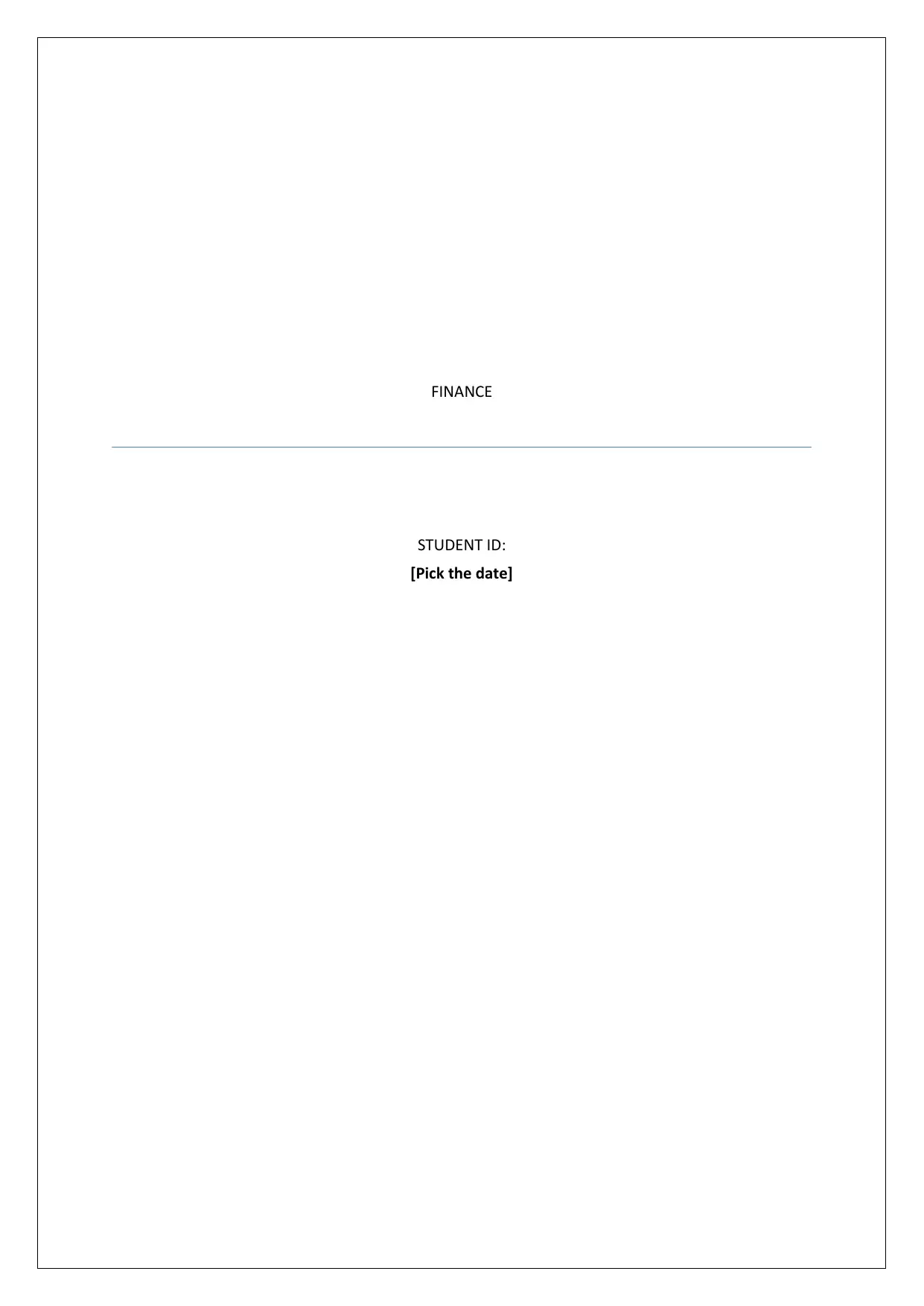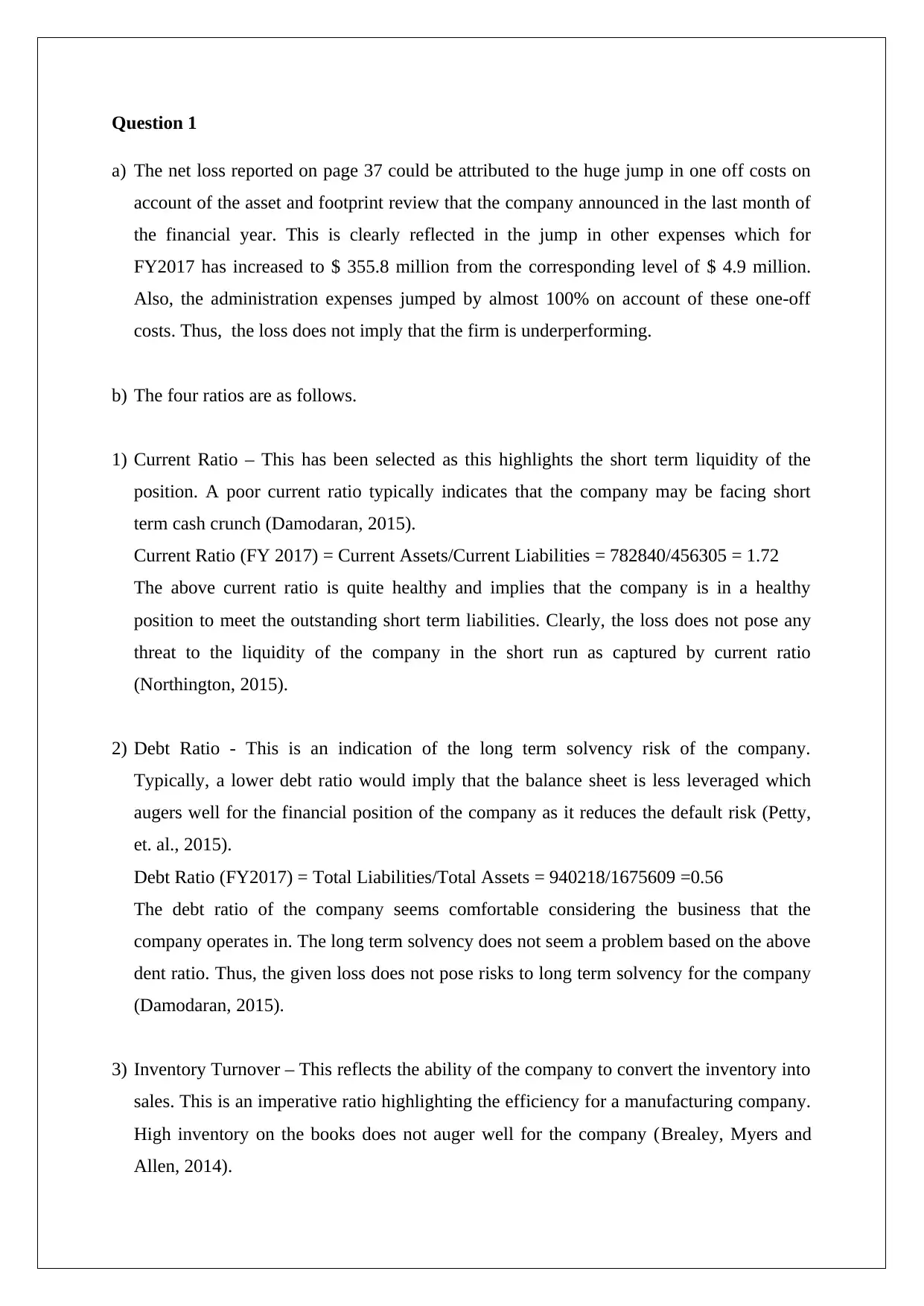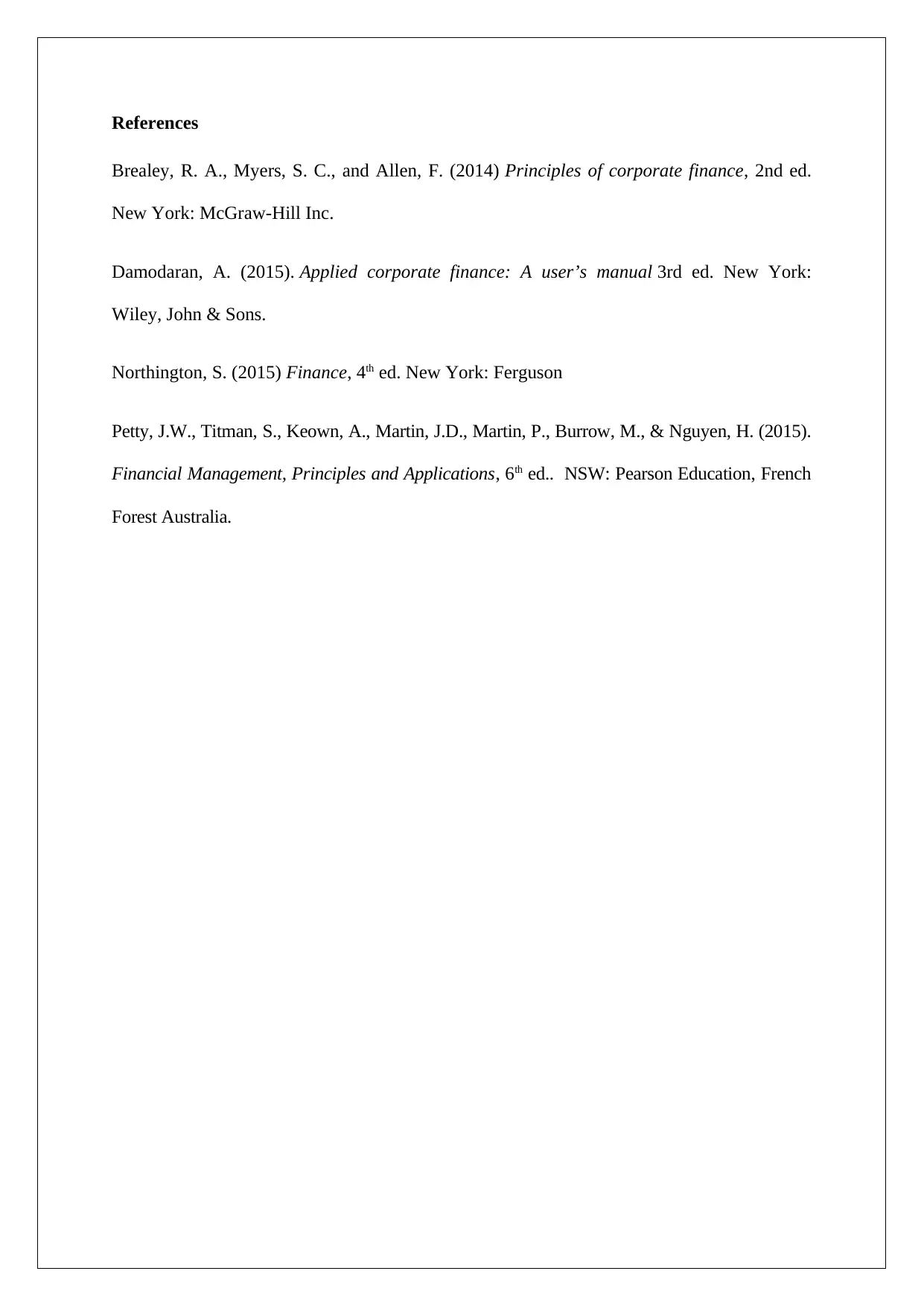Analysing Murray Goulburn's Financial Standing Based on 2017 Report
VerifiedAdded on 2023/06/12
|4
|742
|260
Report
AI Summary
This report assesses Murray Goulburn's financial health based on its 2017 annual report, which reported a net loss attributed to one-off costs. The analysis employs four key financial ratios: the current ratio, debt ratio, inventory turnover, and quick ratio, to determine if the loss indicates a 'favorable' financial position. The current ratio suggests healthy short-term liquidity, while the debt ratio indicates comfortable long-term solvency. However, the inventory turnover ratio is low, signaling potential inefficiencies in converting inventory to sales. The quick ratio, while lower than the current ratio, doesn't pose significant concerns given the company's manufacturing focus. Overall, the report concludes that while the net loss is concerning, the company's financial position, based on these ratios, is reasonably stable, though improvements in inventory management are needed.
1 out of 4











![[object Object]](/_next/static/media/star-bottom.7253800d.svg)